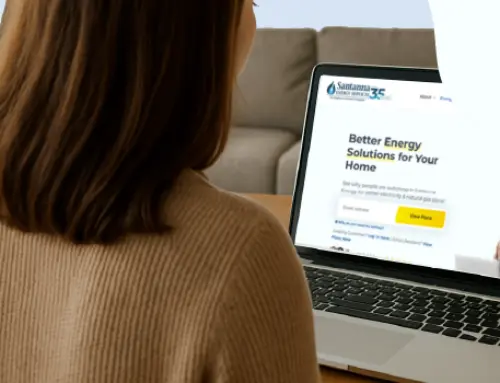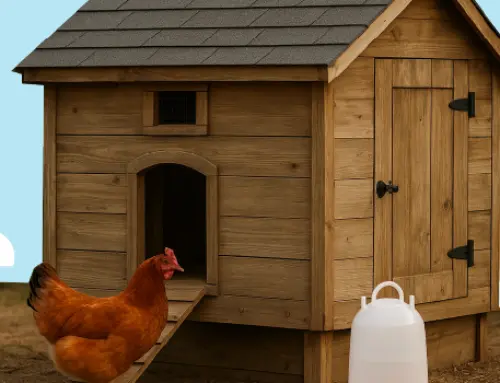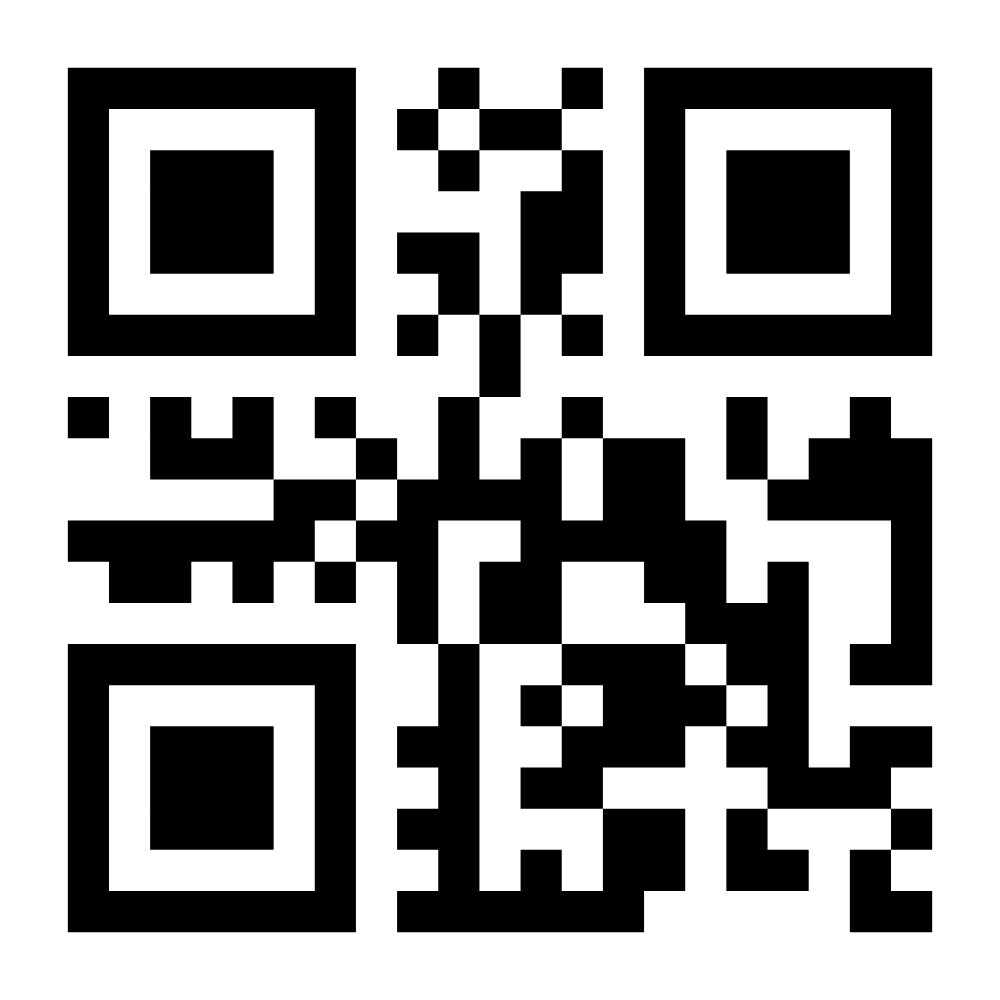Winter Storm Power Outages Preparation Tips for Midwest Homeowners
by Jenna Mendez
19.2 min read

If you're living in the Midwest, especially in states like Illinois, Ohio, or Pennsylvania, you're no stranger to winter storms. In these states, heavy snow, ice buildup, and high winds can knock out electricity and strain heating systems when you need them most.
Even just a small ice buildup, like ¼ inch of ice on power lines, can add 500 pounds to a power line, potentially leaving entire blocks in the dark. That's why understanding winter weather alerts and having an energy plan in place matters.
In this guide, we will walk you through energy-smart, specific steps to get ready before, during, and after a winter storm power outage. From protecting your heating system to stocking essential supplies, you'll have a plan you can count on when the next storm hits.
Read on and take action now, so you're ready long before the first flake falls.
Key Points of This Article:
- In the Midwest, even a thin ¼ inch layer of ice can add 500 pounds to power lines and leave entire neighborhoods in the dark.
- Extreme cold drives heaters and heat pumps to run nonstop, which can overload the power grid.
- Severe blizzards or ice storms can damage large parts of the grid, leaving some areas without power for 1 to 4 weeks.
- Pipes are at risk of freezing when temperatures drop to 20°F or below for several hours, especially if they're uninsulated or in unheated spaces.
First, Know Your Winter Weather Alerts
These alerts aren’t just background noise on your TV screen or quick pings on your phone. They are signals for you to take action.
When it comes to winter storm power outage preparation, understanding the difference between a Watch, Warning, and Advisory can mean the difference between being ready and scrambling at the last minute. The more you know about these alerts, the more confidently you can move forward with your plan.
Winter Storm Watch
A Winter Storm Watch means dangerous winter weather is possible within 48 hours. It’s not guaranteed, but it’s your early heads-up to get moving.
This is the time to check your emergency kit, making sure you have food, water, medications, and heating backups ready. It’s also when you should charge phones, power banks, and other devices, refill fuel for generators or vehicles, and talk with your family about your storm plan.
The biggest benefit of a Watch is that you still have time to prepare, so you won’t be rushing to empty store shelves when everyone else is panicking about preparing for winter power outage conditions.
Winter Storm Warning
A Winter Storm Warning is much more urgent. This means a storm is expected or already happening, bringing heavy snow, ice, and wind that can disrupt travel, heating, and electricity.
By this point, your prep should already be complete, and your focus should shift to safety. Stay home if possible, and make sure safe heating alternatives are ready to use. Keep pipes from freezing by opening cabinet doors or letting faucets drip slightly.
Also, avoid overloading your power system, since sudden surges when power comes back on can trip breakers or damage equipment. Once you’re under a Warning, it’s not about gathering supplies anymore. It’s about conserving what you have and staying safe.
Winter Weather Advisory
A Winter Weather Advisory may sound less serious, but it still signals that you need to pay attention. These conditions might seem manageable, but light snow, freezing drizzle, or sleet can cause slick roads, icy sidewalks, and even minor power disruptions.
Dress in layers, plan for extra travel time, and be careful around outdoor steps or driveways. If freezing drizzle is expected, remember that even a thin glaze can bring down small branches or cause localized outages.
Treat advisories as a reminder to stay alert, because even less severe weather can catch you off guard if you’re not ready.
What Causes Winter Power Outages in the Midwest?
Winter storms can knock out power in several ways. High winds can snap branches or topple trees and poles, taking power lines down with them. Snow and ice make it worse because heavy buildup can break branches and add weight to lines.
Extreme cold puts stress on electrical equipment, especially older systems. Underground lines can also be damaged if ice forms around tree roots. Cold weather makes power lines more brittle, and small animals seeking warmth can cause additional disruptions.
Finally, high energy use during freezing temperatures, when heaters and heat pumps run nonstop, can overload the grid. That’s why having a backup plan is so important when winter hits.
What Happens During a Winter Storm Power Outage
When the power goes out in the middle of a winter storm, it’s more than just an inconvenience. In fact, what happens during winter storm power outages can directly impact your home’s warmth, safety, and food supply.
Knowing what to expect and how to respond will help you stay safe and comfortable until the power is restored.
1. Loss of Heat and Lighting
Indoor temperatures can drop quickly without power, and your home will get dark. The best response is to gather everyone in one room, close off unused spaces, use safe battery-powered lights, and add extra layers or blankets to stay warm.
2. Communication Challenges and Health Risks
Phones, Wi-Fi, and some medical devices may stop working. To stay connected, keep a charged power bank, use a battery-powered NOAA Weather Radio for updates, and have a backup power source for any medical equipment you rely on.
3. Spoiling Food and Refrigerator Stress
Fridges and freezers lose their cool air quickly when opened. Keep doors shut as much as possible, fill empty freezer space with ice or water bottles, and use a cooler with ice for items you’ll need sooner.
4. Increased Risk of Frostbite or Hypothermia
Prolonged cold inside your home can be dangerous, especially for children, older adults, or anyone with health issues. Wear layers of warm clothing, block drafts from windows and doors, move around to generate body heat, and head to a warming center if indoor temperatures drop too low.
5. Safe Heating Alternatives
Using the wrong heating source indoors is risky. Improper methods can cause fires or carbon monoxide poisoning. Only use safe, vented heaters or fireplaces, and follow safety guidelines carefully. Never rely on ovens, grills, or unvented heaters inside your home.
6. Power Surges When Power Returns
When electricity comes back, it can cause damaging voltage spikes. Protect your electronics by unplugging sensitive devices during the outage and waiting a few minutes after power is restored before plugging them back in.
How Long Do Winter Power Outages Usually Last in the Midwest?
The amount of time your power is out depends on a few key factors: how severe the storm is, how much damage it does to poles and lines, and how quickly utility crews can get to work.
In general, shorter outages like those caused by strong thunderstorms might last just 2 to 8 hours. More damaging storms with heavy winds or snow can stretch into 1 to 5 days while crews repair downed lines and clear roads.
The most severe events, such as widespread ice storms or blizzards, can take down large portions of the grid and leave some areas without power for 1 to 4 weeks while infrastructure is rebuilt.
For Midwest homeowners, this means planning for more than just a night without electricity. Ice is especially dangerous here because it can snap tree branches, weigh down power lines, and make travel treacherous for repair crews.
If you live in a rural area, restoration may also take longer since crews have more ground to cover. That’s why it’s smart to prepare for both the common half-day outages and the less frequent but very real multi-day blackouts that can happen during major winter storms.
What To Do Before a Winter Storm Power Outage
Winter storms don’t just bring cold; they can also cause blackouts, burst pipes, and energy costs that spike without warning. That’s why a smart playbook matters. Here’s what to do before a winter storm power outage to help you stay safe, warm, and in control:
-
Seal Drafts
Use weather stripping or caulk around doors and windows to keep warm air inside and cold air out. Sealing drafts helps your furnace work more efficiently, lowers energy bills, and keeps your home warmer for longer during an outage.
-
Clear Gutters and Trim Trees
Remove leaves from gutters and trim heavy branches before a storm arrives. Clogged gutters can lead to roof leaks when ice builds up, and snow-covered branches can snap and fall on your home or power lines.
-
Insulate Hidden Spaces
Add insulation or weather stripping to attics, basements, and crawl spaces. These areas are common sources of heat loss, and insulating them helps your home stay warm longer if the power goes out.
-
Service Your Furnace and Chimney
Schedule a professional checkup before winter begins. A clean and well-maintained heating system works more efficiently, lasts longer, and reduces the risk of dangerous carbon monoxide leaks.
-
Install and Test Carbon Monoxide Detectors
Place detectors near fuel-burning appliances and bedrooms, and replace batteries regularly. Power outages increase the risk of CO poisoning when people use alternative heating, so detectors are essential.
-
Keep Outdoor Vents Clear
Check that vents for gas appliances are not blocked by snow or ice. Blocked vents can cause deadly gases to build up inside your home.
-
Unplug Electronics Before Storms
Disconnect TVs, gaming consoles, and computers before the power goes out. This prevents damage from voltage spikes when electricity is restored.
-
Fill Freezer Gaps
Place water bottles or ice packs in empty spaces in your freezer. A fuller freezer holds cold temperatures longer, keeping food safe during an outage.
-
Protect Your Pipes
Wrap exposed pipes and let faucets drip during extremely cold weather. Running water is less likely to freeze, helping you avoid costly burst pipes.
-
Open Sink Cabinets
Leave cabinet doors under sinks open so warm air can circulate around your pipes. This simple step adds extra protection against freezing.
-
Download Offline Info
Save emergency contacts, maps, and important information to your phone or in print. If internet service or cell towers go down, you will still have access to what you need.
-
Pack a Go-Kit
Prepare a small bag with essentials like food, water, medications, and warm clothing. Having a ready-to-go bag is a smart part of any winter power outage survival kit in case you need to evacuate quickly.
-
Store Fuel Safely
Keep gasoline and charcoal outside, away from your home and in safe containers. This prevents dangerous fumes indoors and lowers fire risk.
Always check ahead of time where the nearest warming centers are in your community so you know exactly where to go if your home becomes too cold to stay in safely. Local emergency management websites, 2-1-1 hotlines, and utility company alerts often list these locations during severe weather.
What To Do During a Winter Storm Outage
When the lights go out in the middle of a winter storm, it can feel overwhelming, but having a clear plan makes all the difference. A power outage isn’t just an inconvenience; it can impact your heat, food supply, safety, and even your health.
Here’s what you should do during a winter storm outage to keep your family safe and your home protected:
-
Stay Warm Safely
The most immediate challenge is the drop in indoor temperatures. Layer up with warm clothing, gather everyone in a single room to conserve heat, and use blankets or sleeping bags for extra insulation. Close off unused spaces so your body heat doesn’t escape.
-
Use Safe Lighting
It’s tempting to light candles, but they’re a fire hazard. Instead, rely on flashlights, headlamps, or battery-powered lanterns. Keep extra batteries handy and store your lights in an easy-to-reach spot so you’re not searching in the dark.
-
Protect Your Food Supply
Your refrigerator and freezer can only keep food cold for a limited time. Keep the doors closed as much as possible.
An unopened fridge can stay cold for about 4 hours, and a full freezer for up to 48 hours. Fill empty freezer spaces with water bottles or ice packs before storms hit to help food last longer.
-
Stay Connected for Updates
Power outages often disrupt Wi-Fi and cell service. A battery-powered or hand-crank NOAA weather radio ensures you’ll still get emergency alerts and local updates.
Keep portable chargers and power banks full before the storm so you can make emergency calls if needed.
-
Watch for Carbon Monoxide Risks
Never use your oven, stovetop, charcoal grill, or outdoor heater to warm your home. These can release deadly carbon monoxide gas, which is odorless and invisible.
-
Unplug Electronics
When the power finally comes back, a surge can damage your electronics. Unplug devices like TVs, gaming consoles, and computers during the outage. Wait a few minutes after the power is restored before plugging them back in.
-
Check on Neighbors & Vulnerable Family Members
Elderly relatives, infants, and people with medical needs are especially vulnerable during winter outages. A quick call or visit, if it’s safe to travel, can make a big difference.
Extra Tip: Many communities open warming centers during severe storms. Check your city or county’s emergency management website ahead of time so you know where to go if your home gets too cold.
What To Do After a Winter Storm Power Outage
When the power comes back, it’s tempting to get back to normal right away, but knowing what to do after a winter storm power outage and taking a few careful steps will help protect your home, your appliances, and your safety.
-
Turn Electronics Back On Gradually
Power surges can happen when service is restored, so wait a few minutes before plugging in sensitive devices like TVs and computers, and always use surge protectors whenever possible.
-
Check Your Heating System
Your furnace or boiler may need a reset after an outage, so follow the manufacturer’s restart instructions, and if you smell gas or notice unusual noises, call a professional before using it.
-
Inspect Food in the Fridge and Freezer
Spoiled food can make you sick, so discard anything that has been above 40°F for more than two hours.
-
Refill Emergency Supplies
If you used water, batteries, or non-perishable food during the outage, replace them right away so you are prepared for the next storm.
-
Check for Home Damage
Winter storms can cause hidden issues, so look for broken branches, ice damage, frozen pipes, or leaks, and take care of them before the next freeze.
-
Stay Informed
Storm impacts can last beyond the outage, so keep listening for local updates on road conditions, warming centers, and any utility repair notices.
What Not To Do During a Winter Storm Power Outage
When the power goes out, it’s just as important to know what not to do as it is to know what steps to take. Making the wrong move can put your safety, health, or home at risk.
-
Don’t Use Ovens, Grills, or Outdoor Heaters Indoors
Never try to heat your home with a gas oven, charcoal grill, or outdoor propane heater. These can quickly fill your home with carbon monoxide, which is a deadly, odorless gas.
-
Don’t Run Generators Indoors or Near Windows
Generators should always be used outside and at least 20 feet from doors or windows. Running one in a garage, basement, or porch, even with windows open, can cause carbon monoxide poisoning.
-
Don’t Leave Candles Unattended
While candles can provide light, they also pose a major fire risk, especially if left burning while you sleep or near flammable items. Use flashlights or battery-powered lanterns instead.
-
Don’t Constantly Open the Fridge or Freezer
Every time you open the door, cold air escapes, causing food to warm faster. Keep doors shut as much as possible to keep food safe longer.
-
Don’t Overload the Power System When Electricity Returns
Plugging in everything at once can cause surges or even trip your system. Turn things back on slowly, starting with essentials.
-
Don’t Ignore Health Warning Signs
Shivering, numb fingers, confusion, or dizziness can be signs of frostbite or hypothermia. Don’t brush these off; instead, seek warmth and medical help if needed.
-
Don’t Assume the Outage Will Be Short
Even if your utility gives an estimate, winter storms can delay repairs. Prepare for the possibility of a multi-day outage instead of just hoping it ends quickly.
My Experience Weathering Out the Chicago Winter Storm of 2024: What Helped, What Hurt, and How To Stay Warm
Here at Santanna Energy Services, we have multiple employee-owners who have experienced a winter storm power outage, including me. Here are tips that helped me the most while dealing with a 2024 power outage in Chicago:
During this time, strong winter winds knocked our power out for an hour, but let me tell you, that was a LONG hour. I’m pretty cold all the time, so the thing that helped me the most was layering up and wrapping myself in a lot of blankets.
I had two dogs at the time, so I took action for them by dressing them in their sweaters to keep them regulated.
We didn’t have a generator or anything, so we decided to turn on our gas fireplace, and that helped keep our living room warm while we all waited for the power to come back on. Another element that came in handy was a power bank to charge our phones and keep updated on what was happening around us.
I made sure to unplug minor electrical appliances like my air fryer, lamps, and coffee maker in case a surge happened once the power came back on. And before you know it, it did!
Winter Power Outage Survival Kit
A winter storm can cut power for hours or even days, impacting not just your lights but also other essential services. By putting together a smart, easy-to-access winter power outage survival kit, you ensure you and your family stay warm, safe, and connected no matter what happens.
-
Water & Ready-to-Eat Food
Store at least 1 gallon of water per person per day for 3 days, plus canned goods, dried fruit, nut butters, and protein bars that don’t require cooking or refrigeration.
-
Lighting Essentials
Include a flashlight or headlamp and spare batteries so you can move around safely in the dark without using candles, which can be a fire hazard.
-
Emergency Radio
Pack a battery-powered or hand-crank NOAA Weather Radio so you can get local weather and outage updates even if cell service fails.
-
Power for Devices
Have fully charged portable chargers or power banks so your phone and essential electronics stay powered during the outage.
-
First-Aid & Medical Needs
Keep a stocked first-aid kit and at least a week’s supply of necessary medications in your kit, stored where you can access them easily.
-
Warmth & Shelter Items
Add extra layers, such as hats, gloves, socks, blankets, and sleeping bags, to keep body heat in when the heating system isn’t working.
-
Tools & Documents
Pack a manual can opener, basic tools (wrench, pliers, multi-tool), a whistle, and copies of important documents in a waterproof bag.
-
Personal & Pet Needs
Include essential items like hygiene products, prescription glasses, baby supplies, and pet food and water to ensure everyone in the household is covered.
-
Cash on Hand
Carry some cash in small bills in case ATMs or card machines are down.
-
Outdoor Essentials
Store a snow shovel, ice melt, and sturdy gloves nearby in case you need to clear paths or exits after the storm.
What Happens to Your Energy Bill During a Storm?
A winter storm can affect your bill in ways you might not expect. Even if your power goes out, your costs can still change. Here’s what happens to your energy bill during a storm:
When power comes back, most people turn on heaters, lights, and appliances all at once. That sudden spike in use can make your bill higher. But while your electricity has been out, your electricity bill won’t go up.
In the same way, storms damage lines and equipment, and utilities spend a lot on repairs. Sometimes those costs are spread across all customers, showing up later as small fees on your bill.
In areas where energy prices are based on supply and demand, bills can jump during extreme cold because everyone is using more power at the same time.
Frequently Asked Questions
Should I buy a generator for winter outages?
A generator can be valuable if you live in an area with frequent or extended outages, as it can power heating systems and essential appliances. Choose the right size for your needs and follow all safety guidelines.
Are propane heaters safe indoors?
Only propane heaters specifically labeled for indoor use are safe inside, and they must be used with adequate ventilation. Never use outdoor-only heaters indoors.
How do I prevent carbon monoxide poisoning from emergency heaters?
Use only vented or indoor-rated heaters, keep vents clear, never block airflow, and install working carbon monoxide detectors near sleeping areas.
At what temperature will my pipes freeze?
Pipes can start to freeze when temperatures drop to 20°F or below for several hours, especially if they’re uninsulated or in unheated spaces.
How do I protect pipes from freezing during an outage?
Wrap exposed pipes with insulation, open cabinet doors under sinks to let warm air in, and let faucets drip slightly to keep water moving.
Should I drain my pipes if I lose power?
If an outage is expected to last several days in sub-freezing weather, draining pipes can prevent costly damage from bursts.
Can I use heat tape during a power outage?
No. Heat tape requires electricity to work, so during an outage, you’ll need other methods like insulation and dripping faucets.
Will my home security system still work in an outage?
Many modern wireless systems have battery backups that last 12–24 hours, but older wired systems may stop working without power. Check your model’s specifications.
Winter storms in the Midwest can hit hard, bringing freezing temperatures, heavy snow, and sometimes days without power. By taking proactive steps like sealing drafts, protecting pipes, stocking your survival kit, and knowing what to do during and after an outage, you can keep your home safe, your family warm, and your stress levels low.
But preparation is not just about what you do before the storm. It is also about having a plan for your energy costs. With Santanna’s Unlimited Energy plan, you get a predictable supply charge every month, even during the most unpredictable winter weather. No spikes and no surprises*, just stability when you need it most. Be ready for whatever winter brings by locking in your Unlimited Energy plan today and enjoy peace of mind all season long.
* Restrictions apply. Enrollment based upon program eligibility. Customers using more than 125% of normal monthly usage as determined by Santanna may be required to switch plans.
Jenna Mendez is a Midwest native with lifelong roots in Illinois and time spent in Ohio during college, giving her a deep understanding of the Midwest region’s people, climate, and energy needs. She brings firsthand experience and local insight to topics that matter to Midwest homeowners, especially energy efficiency, sustainability, and home living. Jenna specializes in writing about eco-friendly living, all things Midwest, renewable energy, and practical ways to reduce energy costs. Jenna brings a trusted, and local hometown voice to every article she writes, helping readers live well, and sustainably, right where they are.







